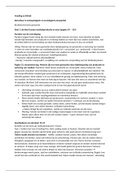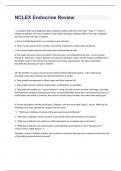Samenvatting
Summary Begrippen uit handboek CHUKUS US
- Vak
- Instelling
- Boek
Begrippen/termen met hun definitie en relevantie voor de US (aan het einde van elk hoofdstuk in de blauwe kaders) uit het handboek "American Civilization: An Introduction" van David Mauk en John Oakland (7e editie) - CHUKUS - F. Albers - Universiteit Antwerpen - Toegepaste Taalkunde (TTK) - BA2 - S...
[Meer zien]














